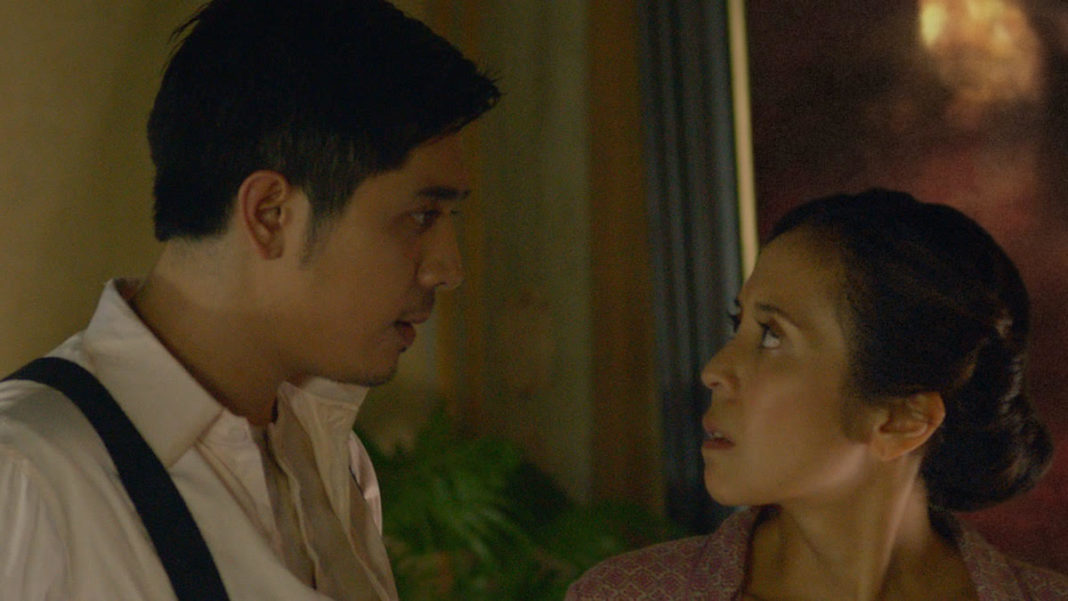LOY ARCENAS’ “Ang Larawan” gives justice to Nick Joaquin’s “A Portrait of the Artist as
Filipino,” the most important drama in English in the Philippine literary canon. A convergence of nationalism, literature, visual arts, and music, the film became a—if not the only—redeeming factor in the recent Metro Manila Film Festival, which had again been filled by crassly commercial and zero-IQ films.
A film version of the Tagalog adaptation by Rolando Tinio, who also wrote some lyrics set to music by Ryan Cayabyab, “Larawan” should introduce National Artist for Literature Nick Joaquin to a whole generation of Filipinos who have been reared in the shallow pragmatism and shabby materialism of American values, having had parents and grandparents who, out of choice or sheer ignorance, have shed their European Hispanic heritage and Roman Catholic sense of ceremony and moral propriety. “Portrait” is a drama about the Filipino’s legendary short memory. It is about Filipino’s self-inflicted paramnesia.
The original play was set in 1941 before the outbreak of the war, and the movie adaptation
takes the audience back to that era through a black-and-white collage of images of Old Manila in Intramuros, showing for instance the grand procession of the Santo Rosario of La Naval de Manila, the biggest fiesta in the walled city led by Dominican friars and brethren.
Transitioning into color, the movie introduces Candida (Joanna Ampil) and Paula
Marasigan (Rachel Alejandro), two aging sisters fighting to stay in their ancestral house amid dire economic pressures and the threat of eviction from their own richer siblings. They’ve understandably missed the boat because they’ve been taking care of their father, Don Lorenzo “El Magnifico” Marasigan, a renowned painter whose last painting he has bequeathed to the two sisters: the portrait shows Aeneas carrying his father Anchises in his back amid the sack and torching of Troy, both figures carrying the same face of Don Lorenzo, the former when the artist was young, the latter now that he’s old.
The haunting double-portrait has a haunted background: berated at one moment of pure wrath by the sisters for his bohemian and wastrel ways that had compelled them to take care of him and abandon the prospect of ever marrying and settling down, the old artist had taken again the brush for the last time to create the magnum opus and afterward, attempted suicide. But he survived. Now he stays in his room and refuses callers. The sisters tell visitors and inquirers their father is “ill.
To augment their steadily declining means, the sisters take in a boarder, the vaudeville
musician Tony Javier (Paulo Avelino), a charming but deadly rake who tries to woo the sisters into selling the painting to a foreign art collector who has promised him a fat commission. That they’ve taken a male boarder becomes fodder of the rumor mill.
The news reaches older siblings Pepang (Menchu Lauchengco-Yulo) and Manolo (Nonie
Buencamino), who have long wanted to sell the Intramuros house. They apply pressure
on the sisters to sell the house and the painting. To hell with heritage and legacy.
Breathing life to the Joaquin classic, Arcenas keeps the story intact without risking the music. With cinematographer Boy Yñiguez, he uses close-up and mid shots to capture the characters’ emotions and elevated shots to capture the antique setting and provide the audience a sense of both historical space and spiritual geography.
The cast is first-rate. Ampil is a musical stage professional so a singing Candida should not be a stretch for her; but she endows her performance with a subtle presence and a dramatic force that seems to belie her lack of any film track record.
Portraying Paula for the second time since 1997, when “Larawan” was first staged, singer
Alejandro has vastly improved, rendering her singing lines with delicacy and pathos.
Even if he’s not really a singer, movie actor Avelino sings his role with the flair of a professional and fully embodies Tony Javier’s charming but deadly knavery. Former Varsitarian editor in chief Bernardo Bernardo also stars as Don Alvaro, one of the people who celebrated the La Naval Festival in the Marasigan household.
Once again, Cayabyab’s signature textures, timbres and chords with the gravity of each scene matched well with the visuals.
According to Cayabyab, he coordinated with Tinio to “transform” into music the highlights and nuances of the Joaquin’s drama.
“Only time will tell if ‘Ang Larawan’ the movie musical was a risk worth taking, with musically heightened emotions [and] internal conflicts juxtaposed in musical elements,” Cayabyab told the Varsitarian. “Philippine cinema has a long tradition of music and singing, even the very first few Filipino films were actually zarzuelas like ‘Walang Sugat’ and the hit movie musical ‘Dalagang Bukid,’” Cayabyab said.
“Ang Larawan” bagged 7 awards in this year’s MMF including the Best Actress Award for Ampil’s performance, Best Picture, and Gatpuno Villegas Cultural Award. A Posthumous Special Jury Prize was also given to Joaquin.













